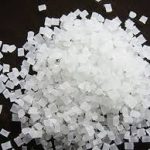2023-03-20 Pageview:226
The impact of PE wax on the flame retardancy of nylon, PA6T, 46, 9T, PPA, HTN and other markets will maintain a relatively long-term upward trend. Even in a period of severe economic downturn, the market demand for high temperature nylon has not been affected. However, with the reshuffle of operating factors and the process of vehicle-free, and the continuous development of new heat-resistant polyamide varieties, the market share of these materials will gradually decrease in the future.

Flame retardant nylon
1. Add a reactive flame retardant to the resin matrix, that is, the flame retardant participates in the reaction as a reactive monomer and combines with the main chain or side chain of the nylon, so that the nylon itself produces a variety of functional groups. The functional group has strong flame retardant activity. Its advantages are good flame retardant stability and performance, little impact on the mechanical properties of materials, and low toxicity; its disadvantages are complicated operation and processing, high cost, and no practical application in production. Additive flame retardant methods are widely used.
2. Through the method of mechanical blending, flame retardant is added to nylon, and processed by twin-screw extruder, so that the nylon material has flame retardant properties, that is, it is added during the compounding process Flame retardant additive. This method is easy to use and widely used.
At present, the research on flame retardant nylon system has been relatively in-depth, which meets the demand of flame retardant to a certain extent. With the advancement of science and technology and the development of society, people pay more and more attention to the requirements of environmental protection.
Adding PTFE wax micropowder to PA wear-resistant modification can increase the wear resistance of the product, and PTFE micropowder is often added as a white wear-resistant agent. Added to the formulation of thermoplastics, it plays the role of flame retardant and anti-dripping, helping thermoplastic materials to achieve higher flame retardant standards. Compared with conventional polytetrafluoroethylene, it has excellent dispersibility and ease of operation, does not agglomerate at room temperature, injection molded products do not wrinkle, black and white products have no crystal points, and it is especially obvious to improve the gloss of the product surface. Good compatibility, less impact on impact strength in high impact formulations.
 Leave a message
Leave a message



We’ll get back to you soon